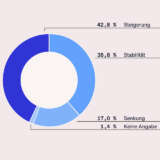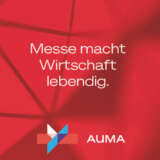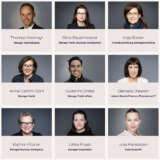© Premium Group
From A to V: Eight trends in the German trade fair industry
An article by Jörn Holtmeier, Managing Director, AUMA
Jörn Holtmeier has been Managing Director of the Association of the German Trade Fair Industry (AUMA) since January 2020.
© AUMA | Steffen Kugler
The AUMA team monitors the German and international trade fair landscape on a daily basis, meeting trade fair experts from the exhibitor, visitor and organiser side as well as relevant players in politics and media. We have distilled eight insights from our surveys, observations and discussions.
Alliances
make you stronger. The AUMA Organiser Outlook 2024/2025 shows that cooperation between trade fair organisers and event organisers is on the rise. For instance, major trade fair formats are being consolidated in a new joint venture, or event organisers are collaborating on marketing to leverage established sales channels. The objective is to join forces, address customers directly, and facilitate new growth. German event organisers and trade fair brands are seeking to strengthen their position in the highly competitive global market.
Alliances also serve to enhance the collective strength of the trade fair industry, in collaboration with other sectors. Joint action with members and partners at national and international level is becoming increasingly important in order to be visible, support each other and create standards for comparability. This encompasses voluntary regulations, such as the recording of key figures, for instance, by the Society of Voluntary Control of Fair and Exhibition Statistics (FKM). It also includes international ISO standards and advertising for funding programmes at federal and state level.
Artificial intelligence
is the technological development which is set to have the greatest impact on the trade fair industry, along with robotics, augmented reality and virtual reality. Opportunity or risk? For trade fair organisers, the opportunities are clear: The AUMA Organiser Outlook 2024/2025 indicates that 56% of respondents already utilise AI applications – almost as a matter of course - in their fields of work. This includes text generators, chat bots, virtual assistants, as well as applications for marketing automation and data analysis. Trade fair teams now need new skill sets. This needs to be reflected in how the next generation of professionals is trained. Like many other industries, the trade fair industry needs to invest in technology, training and staff.
Change
has always been a constant companion of the trade fair industry. Trade fairs reflect trade and economy, fostering innovation and offering solutions. Recent geopolitical crises and conflicts make it increasingly clear that new ideas are required for trade and commerce. The trade fair industry is creating new marketplaces at an impressive pace. There is a growing interest in distant markets of Latin America, in neighbouring European markets and emerging markets in the Middle East. However, the range of trade fairs on offer in Germany is also subject to constant change. Trade fair formats are evolving to address new target groups and align with market trends. New economic trends require new topics and even new platforms.
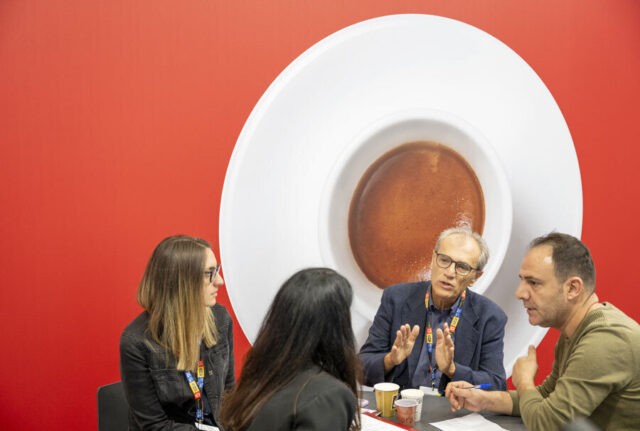
© Koelnmesse GmbH, Oliver Wachenfeld
© Messe Berlin GmbH | Hans Scherhaufer
© Messe Berlin GmbH | Ralf Günther
Experience
must be at the heart of the trade fair, rather than being just a trading platform and a place for initiating business. It does not matter whether the event is a town festival, a trade fair, a reunion or a chance meeting: The highlight of any trade fair, apart from product presentations, is the opportunity to meet with other professionals and engage in discussions about your business. This shared experience provides a foundation for future trust and common ground, offering new perspectives, knowledge and opportunities. Exchange and networking at trade fairs is very important. Organisers design their trade fairs with comprehensive congress- and general programmes in mind, while also creating space for memorable events.
Public life
is once again taking trade fairs for granted. After the challenging period of the pandemic, cities and communities have come to recognise the significant contribution that trade fairs make to the local and regional economy. Trade fairs are always central platforms for their industries. However, their public profile can sometimes be small, occasionally huge. Yet, a trade fair is a fundamental element of any industry's marketing strategy. Exhibition centres again consistently act as a catalyst for regional economic growth, serving as a national and even international platform for showcasing a city or region. At the same time, they provide a forum for discussion and experience, enabling the interested public to engage in debate and contribute to the creation of a shared public space.
Sustainability
has become an integral part of trade fair planning. Sustainability is part of almost everyone's agenda as an adequate response to customer expectations. The number of offers for a more sustainable presence at trade fairs is increasing. This has led to competition of its own. Businesses are integrating climate-neutral actions into their strategic decisions. Over the next few years, exhibition centres in Germany are planning to invest more than 500 million euro to reduce their carbon footprint, in order to remain highly attractive to visitors and exhibitors alike. In 2025, the exhibition industry will transition to green electricity, marking a significant achievement in the industry's sustainability journey towards climate neutrality by 2040. This is five years ahead of Germany's national target.
© Messe Düsseldorf | ctillmann
© Messe Düsseldorf | ctillmann
Trade fair budgets
of exhibiting companies are rising. 99.5% of all exhibitors plan to continue exhibiting in the next four or five years. For most companies, the only way to demonstrate their market strength is at a trade fair, in direct competition. In terms of marketing live presence is unbeatable. The AUMA Exhibitor Outlook 2024/2025 impressively demonstrates this. After countless virtual attempts during the pandemic, exhibiting companies are rediscovering the value of trade fairs. An increase of investment for a show means skilled staff that offers professional support to visitors, which in turn attracts customers and ensures memorable experiences.
Visitor marketing
is becoming increasingly important for the success of trade fairs. Following the cancellation of all restrictions related to the pandemic, exhibiting companies have demonstrated remarkable swiftness in returning to German trade fairs. However, visitor numbers are recovering more slowly in comparison. At the same time a higher number of decision-makers can be found at trade fairs compared to the pre-pandemic time. Because there is an increase in senior-level attendants the quality of the discussions and the prospect of closing deals are improving. As a marketplace, the trade fair is emphasizing its core by bringing together the right partners. This needs to be backed up by good service and a high-quality experience. It is of utmost importance that trade fair organisers and exhibitors maintain their collaborative approach to visitors.
